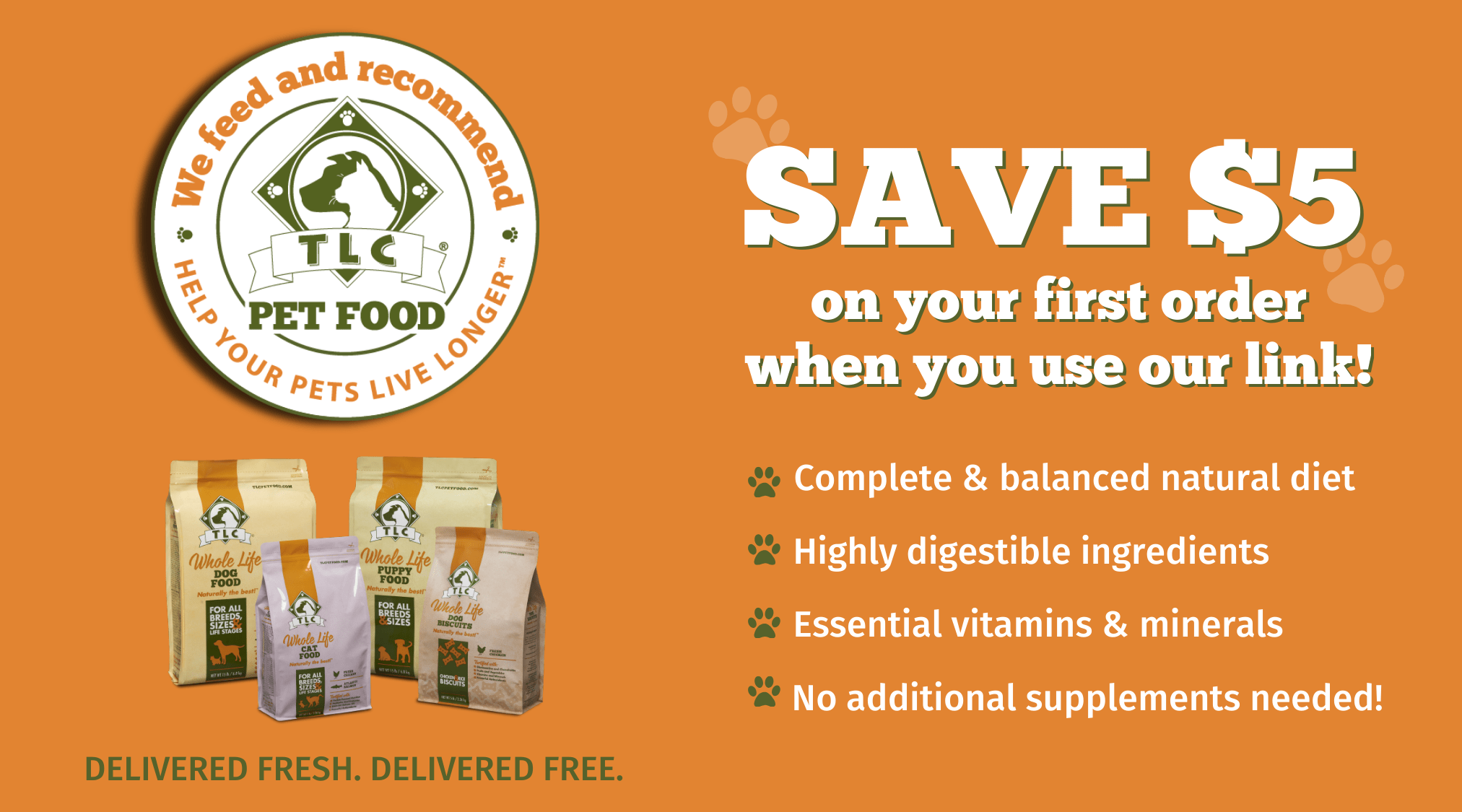What Food Should You Feed Your New Pet?
Choosing the right food for your new pet is crucial to their overall health and well-being, and it should be done with careful thought and consideration. This is why we choose to feed and proudly recommend TLC Pet Food. We’ve listed just a few of the reasons TLC is our food of choice below and we’re happy to answer any questions you might have.
Contained in Every Bite of TLC Pet Food:
Quality 🥩 Meat-First Proteins: A highly-concentrated blend of lamb, chicken, and salmon ensures your pet gets its protein from quality meat sources, supporting muscle development and energy levels.
Packed with 👅 Vitamins & Minerals: Supports overall health and includes immune-boosting antioxidants to protect against disease.
Loaded With Healthy Fats & 🐕 Omega Fatty Acids: Is rich in omega-3 and omega-6 fatty acids, and DHA, promoting healthy skin and coat, brain development, and cognitive function.
Includes Ancient Whole Grains 🌾 & Probiotics: Promotes optimal digestive health and helps pets feel nourished and fuller longer.
TLC Pet Food is naturally preserved, made in Canada, and professionally formulated by expert nutritionists with decades of experience. Every ingredient serves a nutritional purpose. Compare their ingredient list against other pet food and you’ll notice a focus on meat-first, holistic nutrition. Order online and your pet’s TLC will be made fresh and delivered FREE to your doorstep!
Freeze Dried Raw options:
Stella and Chewie
K9 Naturals
Zeal
Raw food Proteins
Rotate these with no issues. I would do 2-3 days of one protein and than switch. Lots of options but these we have found to be great
Pork 80/10/10
Turkey 80/10/10
Beef/turkey 45/45/10 (richer so would do this one no more than 2 x a week as it has tripe in it)
Beef, Bison, Rabbit
Rhoadies Mix (richer so would do this one no more than 2 x a week as it has tripe in it)
BPS (richer so would do this one no more than 2 x a week as it has tripe in it)
Feeding
Until 6 Months of Age - Feed your pup 3 times a day (breakfast, lunch, dinner). Recommend around 4 months to be on an all life stages food from Acana.
6 Months to Adult - 2 times per day (breakfast and dinner)
Raw food calculator:
2-3 months old: 8-10% of their current weight in pounds per day
4-5 months old: 6-8% of their current weight in pounds per day
6-8 months old: 4-6% of their current weight in pounds per day
9-12 months old: 3-4% of their current weight in pounds per day
Here are some general guidelines for feeding your adult dog raw food:
Active, underweight adult dogs should eat 3% of their current weight in pounds per day.
Senior, less active, overweight adult dogs should eat 1.5% of their current weight in pounds per day.
Adult dogs at an ideal weight should eat 2-3% of their current weight in pounds per day.
FOR KIBBLE
At 8 weeks is around 1/4-1/3 of a cup per meal. As they grow there is a food amount on the side of the bag based on weight and activity level.
Adult dogs are around 0.5 cup per meal to 1 cup per meal depending on size and activity level.
Best Grain Free Dog Foods
Grain free dog foods have become a favourite for those wishing to more closely mimic a dog’s natural ancestral diet and to lessen the risk of food allergies.
Compared to the typical kibble or canned food, the best grain free recipes contain more meat based protein as well as easy-to-digest animal fats and usually fewer carbohydrates, too. Not only are grains like corn and wheat a frequent cause of canine allergies they can also be more difficult for a dog to digest.
Why Grains Can Be More Difficult to Digest
That’s because many plant-eating animals (known as herbivores) possess one powerful weapon many carnivores (like dogs) usually lack salivary amylase. Amylase is a special enzyme most herbivores and omnivores (like us humans) produce in their saliva. It’s needed to begin the breakdown of starchy carbohydrates into simple sugars, before they enter the stomach.
Now, dogs also produce amylase. But the enzyme is added further down the digestive tract; in the dog’s small intestine. Because a carnivore’s saliva is mostly amylase-free, carbohydrates can be more difficult for a dog to digest. What actually does make corn and other grains more digestible for a dog is the cooking process itself.
Why Kibbles Can Be Grain Free, But Never Carbohydrate Free
Compared to canned dog foods, kibbles cannot be made with just meat. That’s because the process used for making kibble requires a notable amount of carbohydrates to create a dough-like binder to hold everything together.
Since there can be no corn, wheat, barley, rice (or any other cereal grains, for that matter), novel carbohydrates must be used in their place to make grain-free kibbles possible. Usually, vegetables (like potatoes) appear to be the most common source of carbohydrates found in “non-grain” recipes, remember it’s not gluten-free, it’s grain free.
The Bottom Line
Supporters of grain-free dog foods claim these products provide at least two important benefits;
They’re considered hypoallergenic
They attempt to mimic a dog’s natural ancestral diet
…so, how can you find a quality grain-free dog food?
Look no further and check out TLC dog food:


